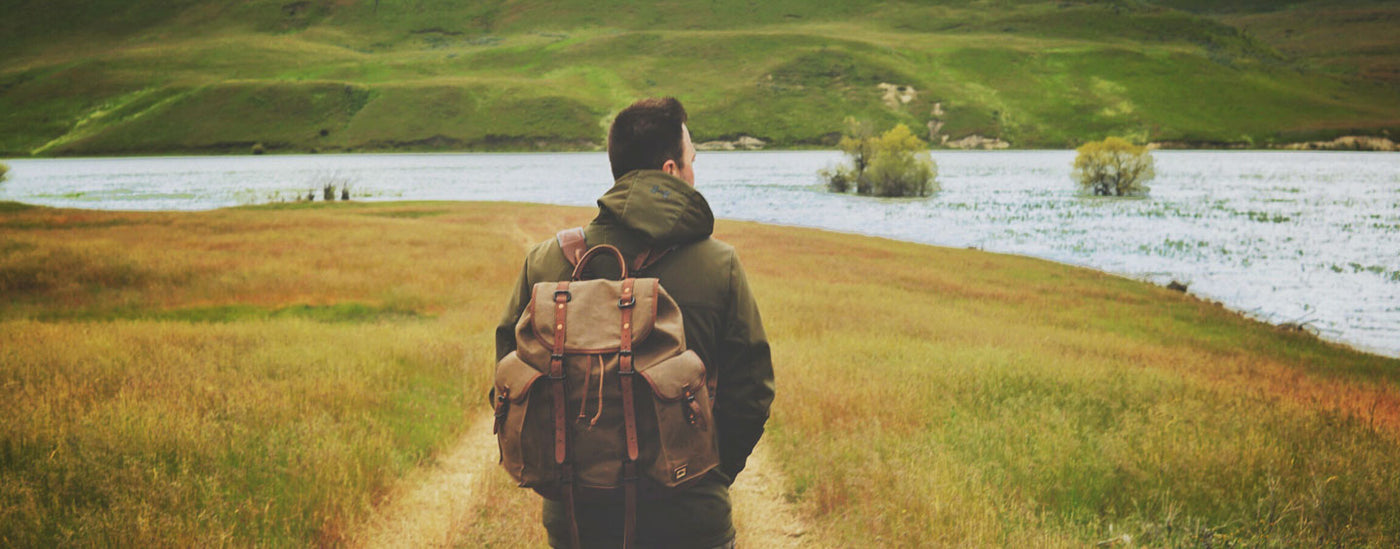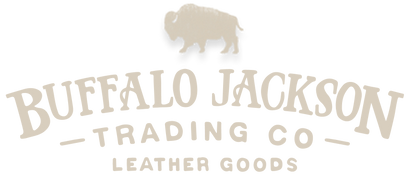Your Cart is Empty
You are $99.00 away from free shipping!
Your Cart is Empty
You are $99.00 away from free shipping!

My name is Brandon Neice. Others might know me as “Dr. Tones” from my YouTube series Dirt Fishin America, a compilation of videos that chronicle my treasure hunting adventures.
A. I was born and raised in Placer County, California, which was the center of attention during the California Gold Rush of 1849. In the third grade, my class went on a field trip to Sutter’s Mill, the site where James Marshall first discovered gold in California. I remember going home to my father and telling him all about the gold that was literally in our backyard!
Needless to say, I caught the fever that day, little knowing that my father and his two brothers had grown up prospecting and dredging the American River with my grandfather. That weekend, my father purchased my first gold pan and took me to a creek that ran through my great-grandfather’s property in the gold-bearing hills of Grass Valley. I watched in wonderment as my father began scouring the creek drainage that snaked its way down the hill to the valley floor. Occasionally I would catch him glancing up at the hills. It seemed as if he were listening to the hills tell the story of how they came to be. He knelt down by the stream and moved a few shovels of earth until he was satisfied with his results. He filled the pan with small amounts of soil from deep within crevices in the bedrock. Once the pan was full he showed me how to separate the gold from the earth by agitating the material with water from the creek. In the bottom of the pan—gold! I remember thinking to myself, “It’s out there! For real!” My father was an avid outdoorsman and each weekend was an adventure in the jeep or on horseback into the Sierra Nevada. Everywhere we went, the gold pan came along. Years later, my father moved to Idaho to start an outfitting business. I soon followed. Idaho had an extensive gold rush of its own and I remained an avid prospector.
One day, a friend of mine showed me pictures of some very impressive gold nuggets. I reacted by asking the classic rhetorical question, “Where did those come from?!” He told me that a friend of his found them using a metal detector. These gold nuggets were far larger than any I had ever seen. “A metal detector?” I said. “Like...the thing that the old guys at the beach use?” He laughed and said, “Yup! He found more gold in one day than he had in all his years of sluicing, panning, and dredging combined!
One week later, I had my very first metal detector. I had no clue what I was doing, where to look, or what to listen for. It took me almost a year to find my first gold nugget with a metal detector, but it was the biggest nugget I had ever found! I spent every waking moment thinking about getting back out to the gold fields and detecting. Unfortunately, the gold fields were now a little farther away and life managed to hinder my ability to get out. I began metal detecting around town for old coins and relics in hopes of satisfying my urges to get out to the gold fields. I studied old maps and numismatics (coins) and researched locations to find old coins. I began to set goals. At first, they were modest: Find a silver coin, and a silver quarter, reach the 1800s, etc. My enthusiasm grew with each new benchmark, and I soon realized I was addicted. My passion had grown from gold to nearly everything. I wanted to find it all! Gold, coins, jewelry, relics, meteorites, sunken treasure—everything.
Since then, I have managed to find almost all of the above. It never ceases to amaze me. There’s so much treasure out there just waiting. This past year, I recovered what many consider the rarest US silver coin minted in the twentieth century! Over the years, I’ve traveled all over the world in search of precious metals, from the deserts of Nevada to the hillsides of England, searching for everything from ancient Roman and Celtic coins to gold nuggets and meteorites. The feeling of setting out to Find something in particular and then actually finding it is unexplainable.
I’ve always been a “creative” individual. At one point in my life all I wanted to do was write and record music. The software used to record music is almost identical in layout and function to the software used to edit videos. A few years back my mom bought me a GoPro for Christmas and I began using it to document my adventures in treasure hunting. As it would turn out, there’s actually people that liked to watch my creations and take part in my virtual adventures from the comfort of their own homes. I began uploading all of my video to YouTube and seemingly overnight, I developed a strong following of treasure hunters who shared my passion for the great outdoors, adventure and exploration. Fast forward 5 years and what started off with mom’s GoPro has turned into thousands of dollars in video production gear and an obsession for capturing the beauty of our world through the eyes of a treasure hunter.
I wish I could explore and seek out valuables everyday but for now I’m a weekend warrior. My career as firefighter paramedic offers me the ability to get out more than most though because of a unique 48/96hr schedule. 48hrs on duty followed by 4 days off to explore and film. Work hard. Play hard. Do only what you love because one day, you’ll realize you’ve become too old to do it. Tick Tock.
A. Well… The original California gold rush started in 1849 (the 49r’s) and although I look much older than I am, I’ve not yet had an opportunity to meet a 168 year old person from the original California gold rush. I have met several old timers from the gold rush revivals who actively prospected the wild west during periods of the late 30’s-40’s. Throughout American history the price of gold has fluctuated and in times of increased value, old mines that weren’t worth digging with prices at twenty dollars per ounce became new gold rushes when gold reached $100 per ounce. The work that has occurred throughout various mines in the western United States is both a blessing and a curse. On one hand, you have true American grit and the pursuit of happiness through pioneering the west in search of the all elusive gold nugget. The geology and mining techniques that came from that period laid the foundation for what geological anomalies the modern prospector looks for and what tools will be best for extracting precious metals from certain environments. On the other hand, you have years of environmental damage caused by centuries old mining practices like hydraulic mining (washing mountains away using high pressure water cannons) and the use of mercury to retrieve gold through the process of amalgamation. The mining practices of yesteryear have littered and scarred the earth. Reclamation of these areas will take another hundred years. Miners from the 1800’s didn’t have a garbage man that came to pick up trash every Monday. Instead they lived in remote and often harsh conditions, living off of canned foods and whatever game they came across. Thousands of men flocked to gold bearing areas in hopes of striking it rich and when the ground was payed out, they picked up and rushed off to the next place that word of gold was mentioned. Unfortunately the garbage they left behind still litters the wilderness and deserts of the west. There’s a saying when it comes to finding gold… “Go where its been found before”. If you have a keen eye and some knowledge of what mid 1800’s garbage looks like, you can rediscover long lost gold mines and mining camps. My preferred method of retrieving treasure of all sorts is metal detecting. I love metal detecting 1800’s gold mining camps because, not only do I have the chance to find gold nuggets, I also have a chance to find 1800’s coins and relics. These coins and relics are often more valuable than the gold itself. Nothing comes easy though. While todays metal detectors can give you a decent idea of the metallic make up of the target and how deep it is, they still lack the ability to be correct 100% of the time. This means you’ll have to dig lots of 1800’s garbage to get to the 1800’s treasures. It’s also worth mentioning that todays mining techniques are far different than the techniques used in the past. Mining today is highly regulated and environmentally conscious. While it’s important that we remain vigilant about environmental standards, it’s also important that we allow the American public to mine both for recreation and commercially. There was a time in America when everything we owned was made in our own country by our own hands. Today this isn’t possible in part because of mining restrictions. Remember… If you can’t mine it or grow it… it doesn’t exist. Ok, that’s enough politics for today.
A. I really look up to anyone that takes risk in trade for adventure. Pioneers like Lewis and Clark, Sir Edmund Hillary, Jacques Cousteau, Amelia Earhart, Neil Armstrong… People that really put it all on the line for a chance to be the first. People who push the boundaries of what it means to be human and inspire others to get out and go for it! I also love fictional stories of adventure from the likes of Jules Verne and Mark Twain. Mark Twain has the best gold mining quote of all time btw. “Show me a gold mine and I’ll show you a hole in the ground with a liar at the top” That quote was derived from the amount of falsification when it came to selling and trading of “gold claims”. It was common practice to “salt the ground” with gold from other locations when investors were to be present. The investors would be amazed by the amount of gold the claim was producing and a bidding war would ensue.
A. The Metal Detecting Bible is a must have for any aspiring treasure hunter. I can personally vouch for the author's credibility.
A. I always tell people to be patient and to remember that if you set out to just have an adventure, you'll always succeed. The true treasures are the memories you create along the way.
A. When I head out into the field, it's not a "normal camping trip". Along with the normal provisions, I have to haul cutting-edge electronic locating devices AND (because finding treasure isn't enough) camera gear to capture that moment when history resurfaces. The bags that I use to haul the gear are every bit as important and thought out as the actual gear itself. Finding treasurer is only half the barrel. Filming it happen is equally as important. If I don't have a convenient, comfortable, safe way to transport my equipment and access it when it counts the most, I'll miss the moments that count the most!
Keep up with Brandons adventuresby subscribing to his Youtube Channel and following him on Instragam
Orders shipped to Canada may be subject to import duties, tariffs, and taxes charged by Canadian customs. These fees are not included in our prices or shipping costs. You will be responsible for any additional charges upon delivery. Please review local customs regulations before placing your order.

